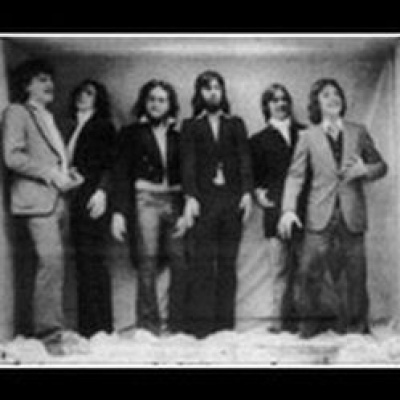
Tibet
Jürgen Krutszch formed Tibet in 1972, having been inspired by the Eastern experimentation of groups such as the BEATLES and THIRD EAR BAND. Krutszch had spent the latter part of the sixties in cover bands (FINE ART, NOSTRADAMUS), and was interested in putting together a group that played native Tibetan instruments such as the tabla, violin, zither, and flute. He quickly abandoned this idea after recruiting former band mates Karl-Heinz Hamann (FINE ART, TESKE) and Dieter Kumpakischkis (NOSTRADAMUS), as well as drummer Fred Teske and vocalist Kalus Werthmann, but the band did retain a certain pseudo-mystic feel to their music during their nine year existence. The band toured extensively throughout the seventies, opening occasionally for fellow countrymen and friends of the band KRAAN, but managed to release only a single album, their self-titled 1979 studio release. The tracks for the album were recorded in three separate sessions dating from December 1976 to September 1978, The band's sound was a complex fusion of astral rock, jazz, classical music and Tibetan sounds, heavily keyboard-driven (Hammond, mellotron) and compared to the likes of ELOY, AMENOPHIS, and even URIAH HEEP, although most of their studio release consists of tracks that are similar in style but more reserved than any of those bands. Lyrics (when present) were primarily in sung English, but the band was known to play longer instrumentals in concert, and three such tracks appear on their studio release. Rumor has it that when Musea Records decided to release the album on CD in 1994, the original master tapes were nowhere to be found, so the label arranged for the entire album to be re-recorded. It is unclear whether the original band members were the actual musicians who recorded the CD version of the album. The original vinyl release sold somewhere between 5,000 and 15,000 copies and is no longer available. As an interesting side-note, Garden of Delight Records released a series of sampler recordings of early psychedelic and symphonic bands around the turn of this century, and volume 5 of that collection features two songs credited to TIBET. While the core membership of the band is the same as that one their 1979 studio release, the singer is listed as a 16 year-old girl known simply as Maggie. These tracks were believed to have been recorded by the band very early in their career, and prior to signing Werthmann as their permanent singer. Nothing else is known of the girl. Having failed to make a commercial impression with their one record, TIBET decided to call it quits and disbanded following their final concert appearance on March 22, 1980. TIBET deserves recognition for having been a small part of the progressive music scene with their extensive live performance history throughout the seventies, and for the eclectic and ambitious style of music for which they were known by their small but persistent fan base.
